TheraFlora™ Synbiotics
$39.97 – $799.97
TheraFlora™ has a precision balance of nutrients your dog requires for a longer, healthier life! Expertly hand crafted in USA
TheraPhen Supplements not food
- Sizes/Pricing
- Ingredients
- Feeding/Storage
- Gauranteed Analysis
- AAFCO Statement
- Additional information
- Reviews (0)
A Synergy of Pro & Pre Biotics…
Probiotics-are dietary supplements containing beneficial bacteria or yeasts.
Prebiotics-food substances intended to promote the growth of certain bacteria in the intestines. Prebiotics also supply nutrients for the probiotics.
Synbiotics-are a supplement that contains both a prebiotic and a probiotic that work together to improve the “friendly flora” of the intestine. A synbiotic product should be considered a “functional food” rather than some obscure chemistry formulation.
TheraFlora™ is a true synbiotic product, that is, functional living nutrient based supplement. Since they supply the live bacteria and the food they need to survive. However, evidentally not all such products promote symbiosis. The best synbiotic combinations currently available include bifidobacteria and fructo-oligosaccharides (FOS), Lactobacillus GG and inulins, and bifidobacteria and lactobacilli with FOS or inulins.
The main reason for using a synbiotic is that a true probiotic, without its prebiotic food, does not survive well in the digestive system. To enhance viability, not only on the shelf but also in the colon, the product must allow for much greater attachment and growth rate of the healthy bacteria in order to minimize the growth of harmful bacteria.
Without the necessary food source for the probiotic, it will have a greater intolerance for oxygen, low pH, and temperature. In addition, the probiotic will have to compete against other bacteria that will take over if its specific food source is not available. Therefore, a “symbiotic” product (probiotic + prebiotic = synbiotic) makes for a better choice.
Probiotics Defined
Considerable success in acute cases of infectious intestinal diseases (salmonellalosis and shigellosis). Escherichia coli is still in use and is one of the few examples of a non-LAB probiotic.The term “probiotics” is described as growth promoting factors produced by microorganisms (protozoa). Contrasting antibiotics, probiotics can be defined as microbially derived factors that stimulate the growth of other microorganisms. A definition of probiotics which has been widely used: “A live microbial feed supplement which beneficially affects the host animal by improving its intestinal microbial balance, the definition emphasizes the requirement of viability for probiotics and introduces the aspect of a beneficial effect on the host.
Lactobacillus species have been introduced including Lactobacillus rhamnosus, Lactobacillus casei, and Lactobacillus johnsonii, because they are intestinal species with beneficial properties.
| Strain | Effect in Canines |
| Lactobacillus rhamnosus ATCC 53013 (discovered by Gorbach & Goldin(=LGG)) | Immune stimulation, prevents diarrhea and many other types of diarrhea |
| Bifidobacterium animalis subsp. lactis BB-12 | Immune stimulation, prevents diarrhea |
| Bifidobacterium lactis HN019 (DR10) | Immune stimulation |
| Bifidobacterium infantis 35624 | Irritable Bowel Syndrome (IBS) |
| Bifidobacterium breve Yakult | |
| Lactobacillus reuteri ATTC 55730 | |
| Lactobacillus reuteri SD2112 | Immune stimulation, against diarrhea |
| Lactobacillus casei DN114-001 | Immune stimulation |
| Lactobacillus casei CRL431 | |
| Lactobacillus casei Shirota | Immune stimulation |
| Lactobacillus casei immunitass | |
| Lactobacillus johnsonnii La1 (= Lactobacillus LC1) | Immune stimulation, active against Helicobacter pylori |
| Bifidobacterium longum BB536 | positive effects against allergies |
| Lactobacillus salivarius UCC118 | positive effects with intestinal ulcers and inflammation |
| Lactobacillus acidophilus NCFM | reduces symptoms of lactose intolerance, prevents bacterial overgrowth in small intestine |
| Lactobacillus plantarum 299V | IBS, used post-operative |
| Lactobacillus acidophilus LA-5 | |
| Bifidobacterium animalis DN 173 010 | Stabilizes intestinal passage |
| Escherichia coli Nissle 1917 | Immune stimulation |
| Saccharomyces cerevisiae (boulardii) lyo | against antibiotic-associated diarrhea and Clostridium difficile infections |
| Streptococcus salivarius ssp thermophilus | reduces symptoms of lactose intolerance |
| tested as mixture: Lactobacillus rhamnosus GR-1 & Lactobacillus reuteri RC-14 |
Oral ingestion results in vaginal colonization and prevention of vaginitis |
| tested as mixture: VSL#3 (mixture of 8 srains of Streptococcus thermophilus & four Lactobacillus spp & three Bifidobacterium spp strains |
positive effects with intestinal ulcers and inflammation |
| tested as mixture: Lactobacillus acidophilus CUL60 & Bifidobacterium bifidum CUL 20 |
reduction of Cl. difficile in feces |
| tested as mixture: Lactobacillus helveticus R0052 & Lactobacillus rhamnosus R0011 |
prevents diarrhea, active against Helicobacter pylori |
| Ingredients & Analysis | |||||||||||||||||||||||||||||||||||||||||||||||||||||||||||||||||||||||||||||||||||||||||||||||||||||||||
| Red Cabbage, Beets, Tomatoes, Blueberries, Black Berries, Barley Grass, Alfalfa, Spirulina, Chlorella, Turnip Greens, Avocado, Kale, Apples, Green Cabbage, Oranges, Grapefruit, Tomato, Carrots, Garlic, Cayenne Pepper, Bell Pepper, Broccoli, Cauliflower, Spinach, Peaches, Blueberry, Raspberry, Kamut Grass, Watermelon, Cantaloupe, Honeydew, Indigo berry, Parsley, Radish, Summer squash, Shitake Mushroom, Ginger Root, Thyme, Cumin, Yucca, Apple Cider Vinegar, Dandelion Root, Sage, Aloe Vera, Reishi, Echinacea, Thyme, Astragalus, and Chicory. (Preserved by a natural pH. Balance) | |||||||||||||||||||||||||||||||||||||||||||||||||||||||||||||||||||||||||||||||||||||||||||||||||||||||||
| Nutrient Profile | |||||||||||||||||||||||||||||||||||||||||||||||||||||||||||||||||||||||||||||||||||||||||||||||||||||||||
| Iodized Salt, L-Lysine, Potassium Chloride, Choline Chloride, vitamins (L-Ascorbyl-2-Polyphosphate (source of vitamin C), Vitamin E Supplement, Niacin, Thiamine Mononitrate, Vitamin A Supplement, Calcium Pantothenate, Biotin, Vitamin B12 Supplement, Pyridoxine Hydrochloride, Riboflavin, Folic Acid, Vitamin D3 Supplement), Vitamin E Supplement, Dicalcium Phosphate, Calcium Carbonate, minerals (Ferrous Sulfate, Zinc Oxide, Copper Sulfate, Manganous Oxide, Calcium Iodate, Sodium Selenite, Beta-Carotene, Rosemary Extract. (Exceeds AAFCO standards)
TheraPlex_2™ also contains trace amounts of more than 50 other minerals. |
|||||||||||||||||||||||||||||||||||||||||||||||||||||||||||||||||||||||||||||||||||||||||||||||||||||||||
|
Metabolic Energy¹ (Calories) |
|||||||||||||||||||||||||||||||||||||||||||||||||||||||||||||||||||||||||||||||||||||||||||||||||||||||||
| Dry Weight 3929 kcal/kg (372 kcal/per cup ² ) | |||||||||||||||||||||||||||||||||||||||||||||||||||||||||||||||||||||||||||||||||||||||||||||||||||||||||
| ¹Measurement of Usable Energy in a food, which differs substantially from gross caloric content. ²Eight fluid oz. equals 5.5 oz. by weight. |
|||||||||||||||||||||||||||||||||||||||||||||||||||||||||||||||||||||||||||||||||||||||||||||||||||||||||
|
Average Nutritional Properties
|
|||||||||||||||||||||||||||||||||||||||||||||||||||||||||||||||||||||||||||||||||||||||||||||||||||||||||
|
|||||||||||||||||||||||||||||||||||||||||||||||||||||||||||||||||||||||||||||||||||||||||||||||||||||||||
|
¹Differs from label guarantees which are either maximums or minimums. |
|||||||||||||||||||||||||||||||||||||||||||||||||||||||||||||||||||||||||||||||||||||||||||||||||||||||||
| Daily Dosage Guidelines & Storage | |||
| Dogs/Puppies: begin with these guidelines. You may adjust portions for desired results depending upon treatment stage to maintain proper nutrient intake. If you are uncertain, consult your Balance Diet™ Vet. tech., or ask your veterinarian. Feed more TheraFlora™ as needed.
BD-Tip: Keep fresh water available! |
|||
| Dosage/Use/Recovery | |||
|
|||
| Dosage/Use/Maintenance | |||
|
|||
| Storage: Taking good care of your very special nutritional supplement
You should promptly refrigerate TheraFlora™ for the very best results including maintaining optimum freshness and potency. TheraFlora™ should travel well with the necessity for cold storage. Our proprietary VitaMethod™ process is an excellent stabilizing force, TheraFlora™ is real whole natural food-botanicals/plants/herbs. |
Sorry! No Data Available Yet.
Sorry! No Data Available Yet.
Additional information
| Quantity | Choose an option.., 16 oz., 32 oz., 64 oz., 1gal, 2 gal, 5 gal, 8 oz. |
|---|


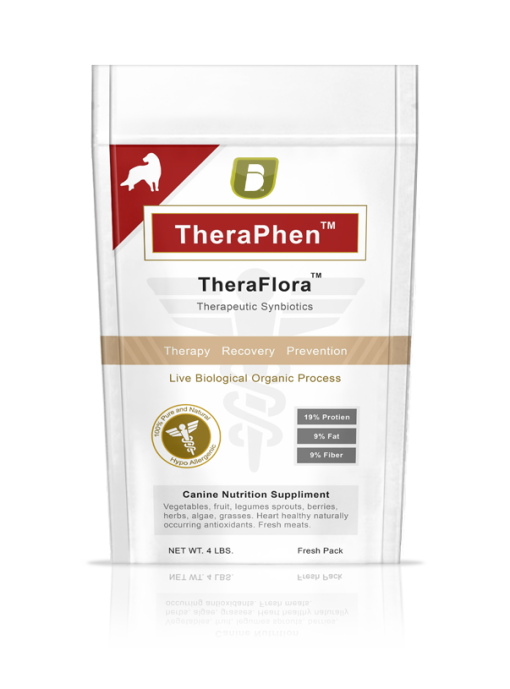

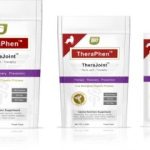
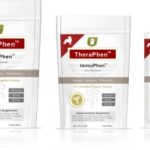

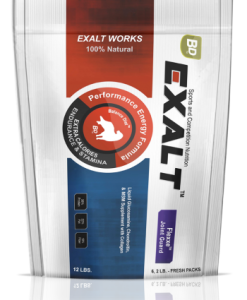
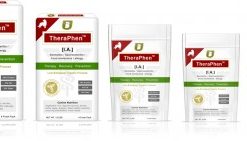
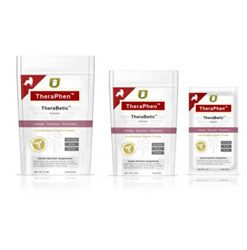
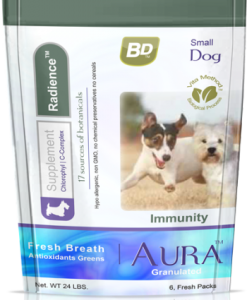
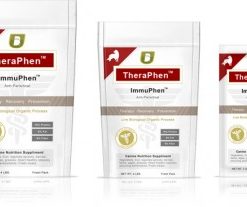
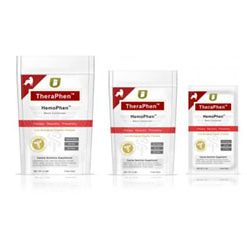

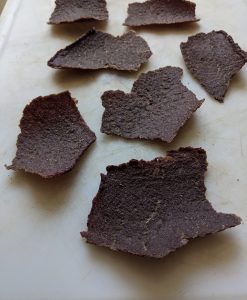



Reviews
There are no reviews yet.